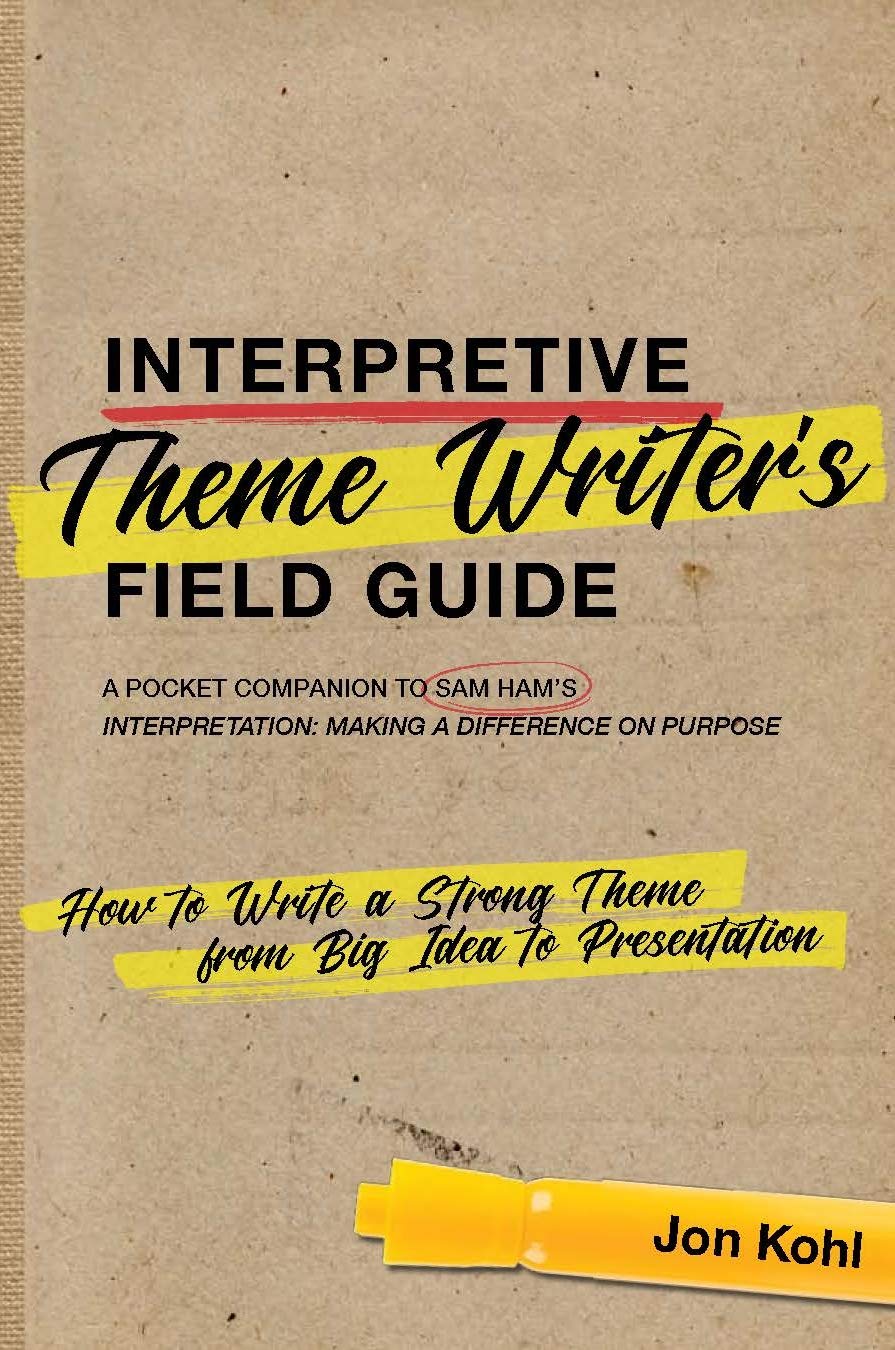Review — INTERPRETIVE THEME WRITER’S FIELD GUIDE by Jon Kohl (Costa Rica)
 Interpretive Theme Writer’s Field Guide:
Interpretive Theme Writer’s Field Guide:
How to Write a Strong Theme from Big Idea to Presentation
by Jon Kohl (Costa Rica 1993–95)
InterpPress Publisher
164 pages
$29.00 (paperback)
November 2018
Reviewed by Jerry Norris (Colombia 1963-65)
•
Que le provoca? (what provokes you)
According to the UN’s latest report on population growth rates, there are now 7.5 billion inhabitants of planet earth. The author, Jon Kohl, can take a well-deserved bow for bringing to light a subject heretofore obscure—most certainly in my own case, and I’m sure no less so with many others. That is: how to write a strong theme from big ideas to presentation. The author is absolutely clear in his admonition to interested parties: “this Field Guide cannot make you a theme writer, it can only help you along the way.” In this manner, his Field Guide “is the first of its kind to dedicate itself whole-heartedly to the art and craft of interpretive theme writing”.
Often, the Guide’s application focused on how it can be used in National Parks and other protected lands which are realms “where we can all pause, consider and dream or walk at the edge of the grandest canyon in the world.” The author poses this seminal question for the development of a great theme from a great story: “What would Mark Twain’s ‘Huckleberry Finn’ be without the Mississippi River”?
When reading through this Field Guide, the author consistently uses the transient verb ‘to provoke,’ beginning with the Foreword: “creating a strong theme is the single most important thing you can do to design a program that not only provokes people intellectually. . .”. Thereafter, in various grammatically forms, it is often expressed within the Guide, as: “that provocation may come from the Big Idea”; and “it often provokes pleasant surprises”; or “we have already seen some provocative elements,” etc. However, it is somewhat surprising that in the Guides section on “Verbs for Stronger Themes”, which list hundreds of suggested verbs, the verb ‘to provoke’ does not appear. Still, a sub-title to the Guide could easily have been written as: ‘what provokes you’.
Its various uses reminded me of how, when serving as a Volunteer in a small village in the foothills of the Andean mountains, I was greeted at the morning breakfast table in this manner: que le provoca? (what provokes you? ). Having been raised on Chicago’s South Side, I had been accustomed to its pejorative implications. Now, I rather looked forward to this greeting at breakfast time as a positive way to begin my day.
Since its verb form can be translated as a call “to stir or incite to action,’ the author has used it effectively to illustrate his central point: “with a Big Idea a theme writer can accentuate important features and increase provocation”.
In recent history, several themes have had maximum interpretive outcomes on the national level. They respond to concepts in the Guide that state: “when you begin with a strong thought-provoking theme, you’re already close to success . . . and Big Ideas have the power to provoke.” In the Russian Revolution of 1917, Lenin’s simple words “Peace, Land, Bread” affirmed the angst of millions to unite and throw off centuries of autocratic rule, though many who responded to those words could neither read nor write. During the economic uncertainties of the Great Depression in the U. S., when many of our citizens were unemployed, FDR spoke to them from a fireplace in the White House and said: “we have nothing to fear but fear itself” — and an entire nation took heart. In World War II, England under relentless nighttime bombings of its major cities, found collective relief and national purpose in the words “‘Be Calm & Carry On.”
As a Field Guide, wherein one gets the impression of having it in a backpack when putting together a theme team for a consultation with, say, a National Park, its full deployment is somewhat burdened by the need to consult several recommended references before proceeding on theme development. For instance, Sam Ham’s book Interpretation: Making a Difference on Purpose is often cited, as is the PUP Global Heritage Consortium, and Freeman Tilden’s Interpreting our Heritage. Thus, the Interpretive Theme Writer’s Field Guide also contains a bibliography of highly recommended texts which are critical to interpretive theme presentations. This underscores the statement that the Field Guide itself is “a pocket companion” to Sam Ham’s ground-breaking book on the same subject.
Obviously, Interpretive Theme Writer’s Field Guide is mainly for a limited audience of highly dedicated theme writers rather than for the general reading audience. In that sense, its author can take comfort in the fact that he has provided his colleagues and future adherents with a well-documented Field Guide which can materially assist them in the vital task of disciplined theme writing.
•
Following his tour in Colombia (1963-65) Jeremiah Norris went to work on the Peace Corps Staff at PC/HQ. During the Administration of George H. W. Bush, he served as Director of Human Resources, Bureau for Europe, Department of State, managing the U. S. Government response for health in the former states of the USSR. He then worked for the Hudson Institute in Washington D. C. as Director, Center for Science in Public Policy.
No comments yet.
Add your comment